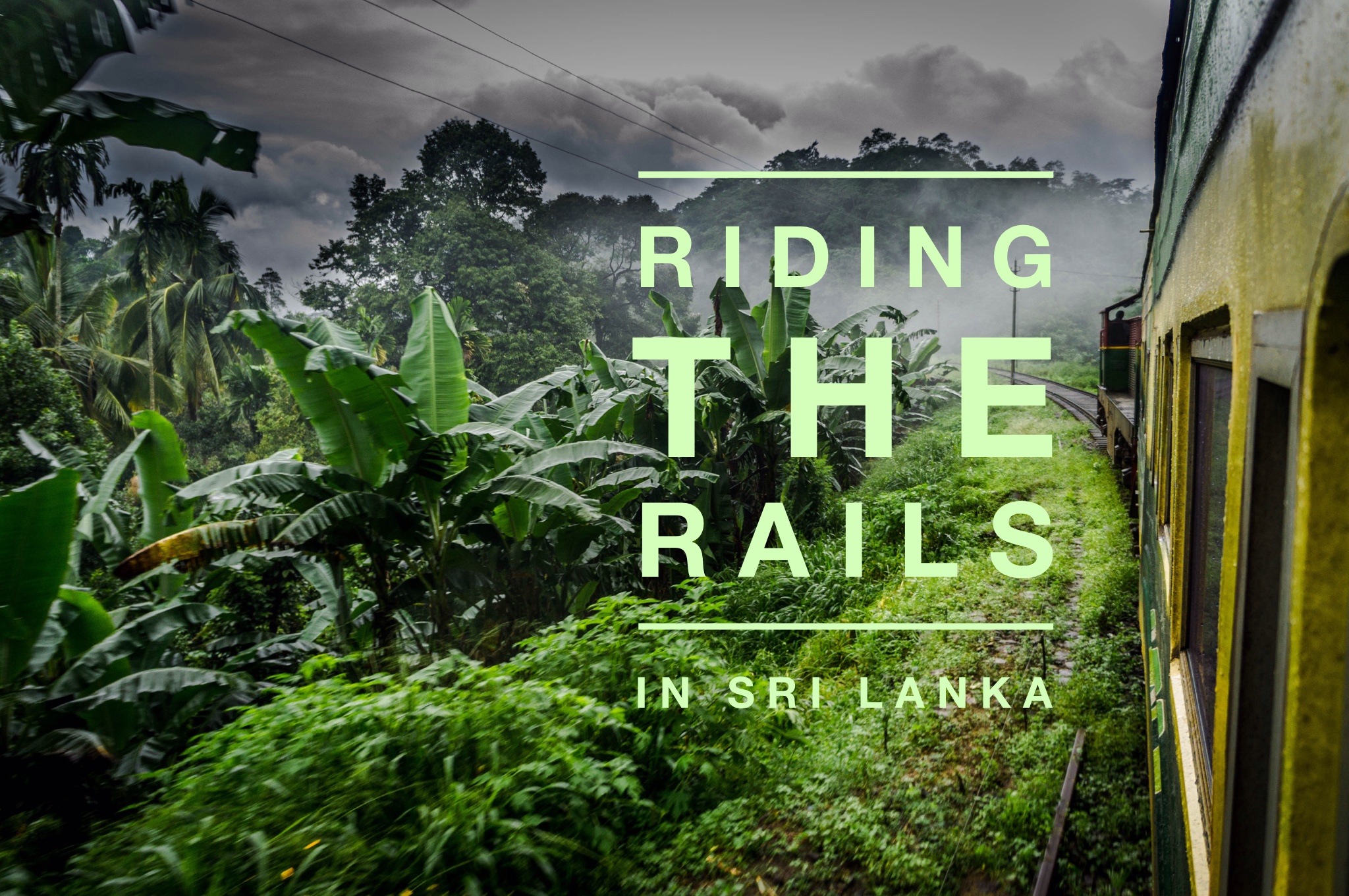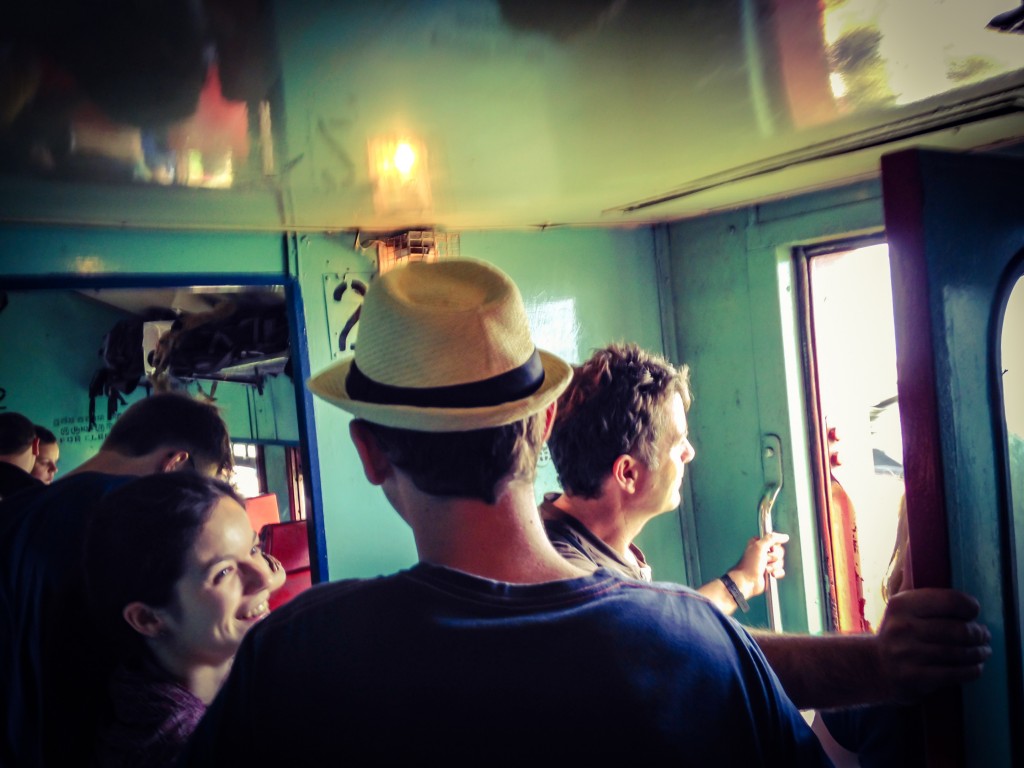There’s only one way to ride the train in Sri Lanka: standing in an open doorway with your hair in the wind while you desperately cling onto an ancient-looking rusty metal bar that looks as if it will peel away from the train cabin at any moment, as though your life depends upon it because it probably does.
Slowly, the small and previously empty platform filled up. First came an older woman, her hair a dull shade of red that had bleached almost orange in the searing Asian sun. Her daypack hung limply behind her and a quiet inquiry to the guard betrayed an American accent.
Then a group of three young women all pulling off the backpacker-chic look perfectly: tiny denim shorts, tight tank tops and glossy hair loosely pulled into messy knots at the back of their necks—a style that looks effortless, but I’ve never managed to pull off without half a can of spray and an entire packet of bobby pins. Dropping their heavy backpacks onto the platform they spoke in excitable English – their varying European accents harmonising gently.
One by one more arrived: all foreigners, all carrying large backpacks like a trail of turtles heading for the ocean. Which is, of course, exactly what we were all doing – making the journey from the city of Colombo to Sri Lanka’s southern beaches.
By the time the train limped into view the platform was packed with travellers. With a groaning sigh the train shuddered to a stop and the crowd surged forward—pushing, forcing their way inside carriages that were already overflowing.
I looked at the tiny space left once the girls in front of me had clambered inside. There wasn’t much room, but the engine at the front was already firing – signalling the imminent departure of the train. Thrusting my bag forward I jumped inside, turning to see if my partner had managed. He stood teetering on the steps of the train, his large backpack and gravity doing their best to pull him back to the platform. I grabbed him and held him steady as the train began to pull off. A man behind him, realising that there would be no room for one more, ran alongside the train in the hope of jumping into a less crowded carriage.
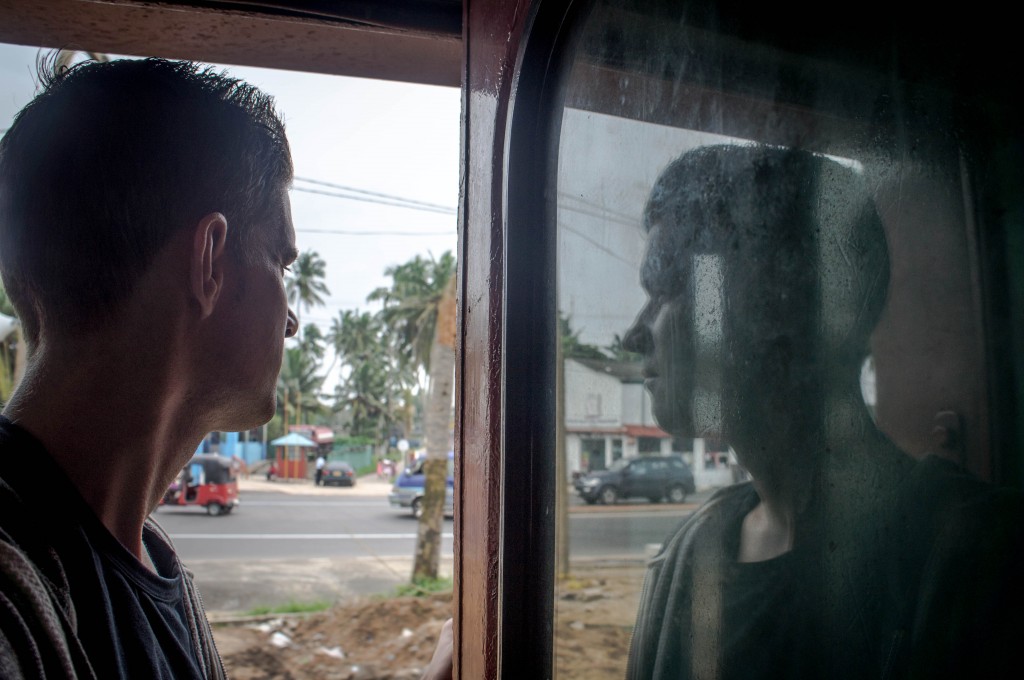
Once the train began to move, we began the process of arranging ourselves Tetris-style into any space that could hold us. We would not be able to move for the next 3 hours, we thought.
But that is not how Sri Lanka works. The fact that we were crammed into the cabin more tightly than a can of sardines was not enough to deter ambitious food vendors from walking up and down the carriages carrying large boxes of fruit on their heads. Even if I had wanted some refreshment, it was simply impossible to reach down into my bag to find a few rupees. But still they kept on coming every ten minutes for the entire 3-hour journey. They clambered expertly over us, forcing us all to become contortionists in order to allow their passage.
Next, a frail woman walked down the train and decided to stand in the tiny space where I could just about shuffle my feet. She started to talk to me. As much as I hoped that she was simply a friendly local wishing to speak with foreigners it seemed unlikely, and so I took advantage of the cramped conditions to pretend that I was unable to turn around fully towards her and faced away. Instead she directed her attention to the backpacker-chic girls who, it transpired, came from Russia and Denmark and were travelling for the first time. Before long she was sobbing hysterically about a terminal illness and begging them to take her to the hospital for treatment when the train arrived in Galle.
Civil War and the Asian Tsunami have seared devastating scars into the communities of Sri Lanka, making begging on the trains common. We rode this train only one day after the harrowing 10-year anniversary of the Tsunami, which caused the world’s worst ever train disaster on the very rails we were riding. The coastal route from Colombo to Galle runs within yards of the sea for the whole distance, and with trains being so overly packed a high death toll was inevitable when the giant waves powered into the side of the train washing it from the track and drowning almost everybody inside.
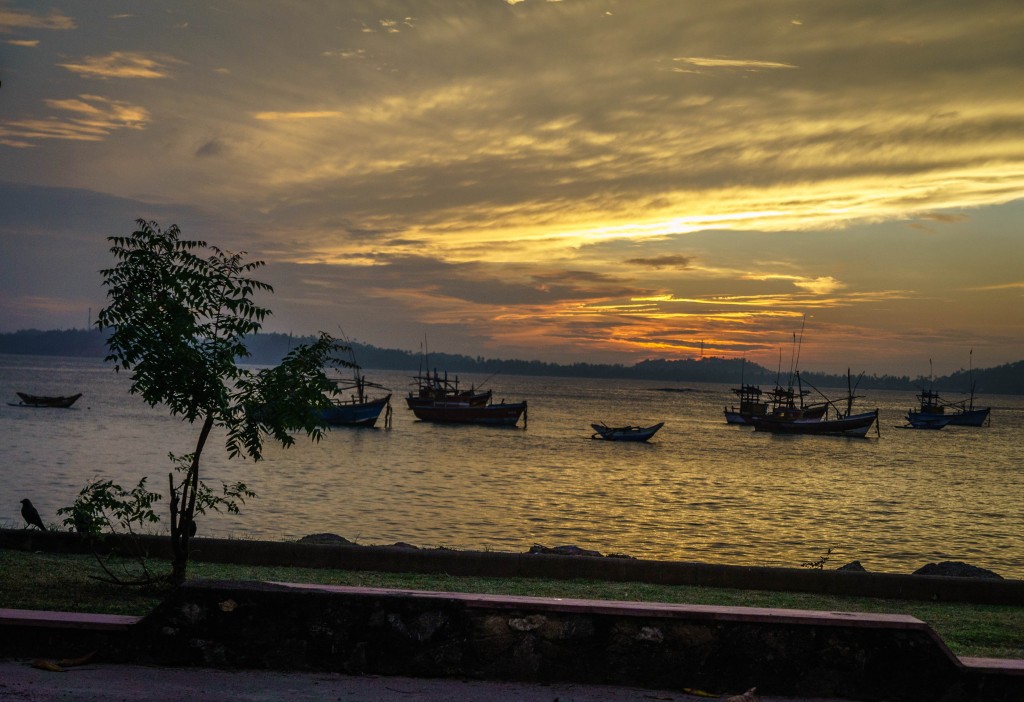
Many of these coastal communities have still not recovered from a disaster that hit them the hardest. It must be difficult, watching hoards of wealthy foreigners riding the very same trains every single day, to refrain from the temptation of asking somebody, anybody, for financial aid.
As a foreigner, it is hard to distinguish genuine need from the opportunist.
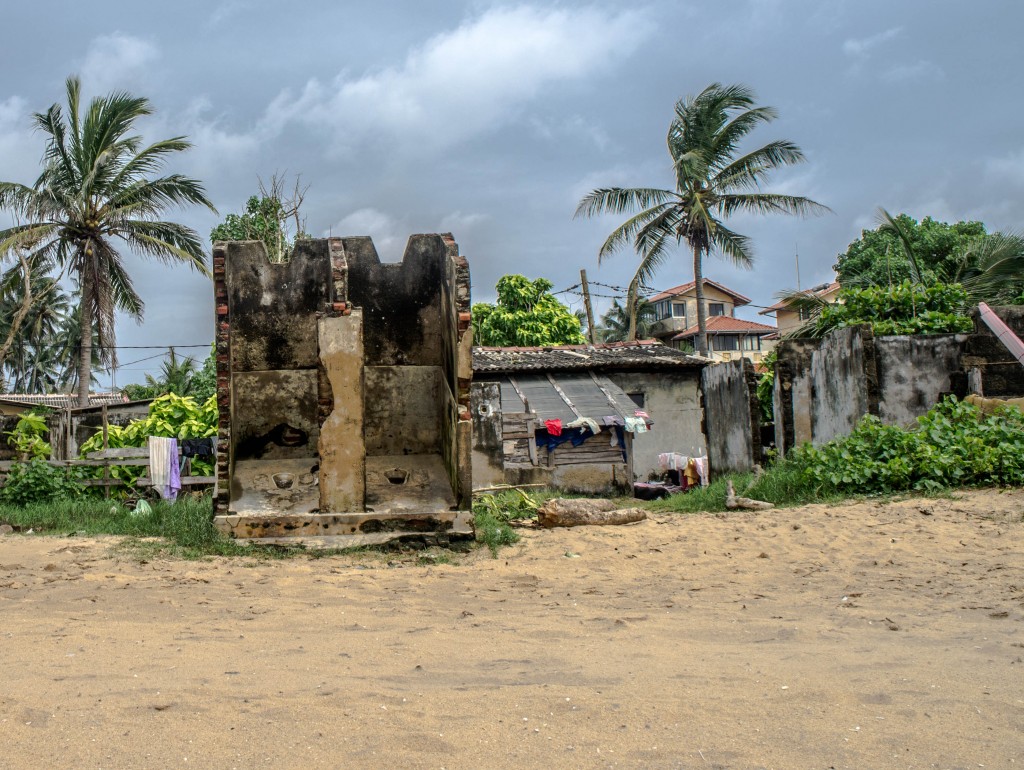
I would guess that most cases are genuine—poverty is very real in Sri Lanka. Thinking about the woman on the train, and how I ignored her, makes me feel like a terrible person.
For travellers, riding the rails in Sri Lanka is part of the experience—another thing to strike off the Bucket List—but to many desperate locals it is a potential lifeline.
Three hours later we clambered off the train, exhilarated but emotionally and physically exhausted.
Have you ever ridden the rails in Sri Lanka? Share your experiences in the comments below!

